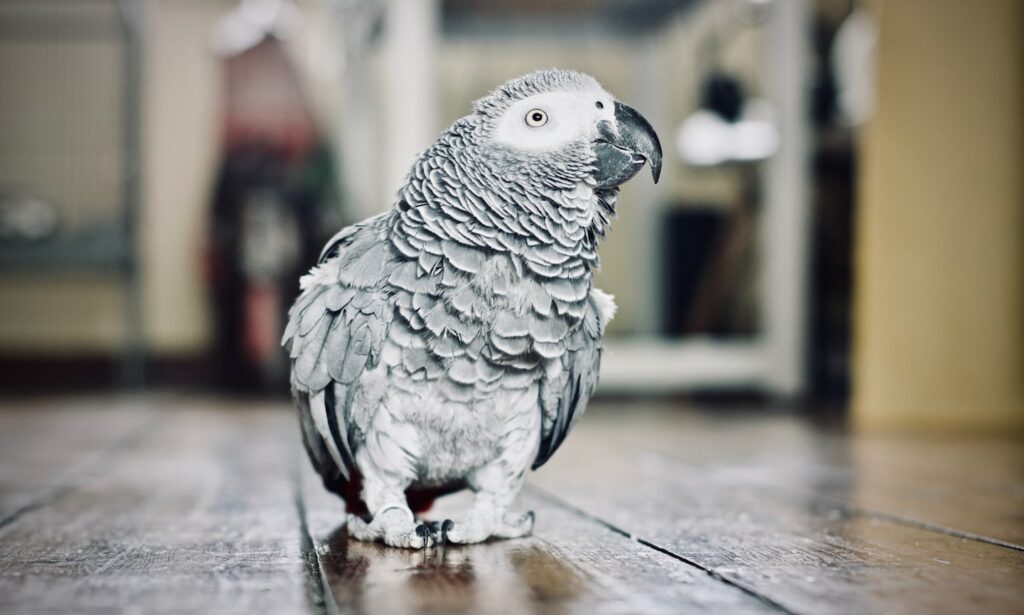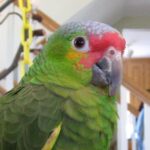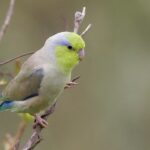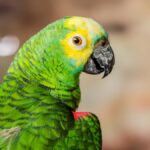How Long Do Parrots Live?

Photo by Adrian Black/iStock / Getty Images Plus via Getty Images
Considering adopting a pet parrot? Their lifespan is a big factor, and it’s only natural to wonder, “How long do parrots live?” When it comes to pets, parrots can truly offer years of companionship.
A parrot’s lifespan can range from 8 to 50 years, with few documented parrots living well into their 60s and 70s, says Alyssa Scagnelli, DVM, an exotic pet vet and clinical instructor of zoological medicine at the University of Wisconsin-Madison School of Veterinary Medicine.
Here, we outline the most popular pet parrot species and their average lifespans, plus tips on care, feeding, and enrichment to keep your feathered friend healthy for years to come.
Why Do Some Parrots Live Longer Than Others?
In general, parrots tend to live longer in captivity than they would in the wild, says Dr. Scagnelli. This makes sense because our pampered house pets don’t need to forage for food, worry about predation, and they have access to regular veterinary care.
Pet birds can sometimes live so long that they’re “willed” to family members or close friends, says Melanie Allen, avian product specialist for the Hagen Avicultural Research Institute (HARI®) and The Hagen Group®.
There are differences in lifespans among pet parrots too. Notably, larger parrots tend to live longer than smaller parrots. The slower metabolism of bigger birds likely plays the biggest role, Dr. Scagnelli explains.
Parrot Lifespan by Size
Within their respective species sizes, genetics, care, and disease all influence how long a parrot can live.
Small-size parrots and parakeets: 8–15 years
The cockatiel, a personal favorite of Dr. Scagnelli, occupies a niche between small and medium parrots. These charming birds typically live 15 to 30 years.
Medium-size parrots: 15–30 years
- Conures
- Alexandrine parakeets
- Ringneck parakeets
- Red rump parakeets
- Lineolated parakeets
- Golden-mantled rosella parakeets
- Quaker (monk) parakeets
- Caiques
- Meyer’s parrots
- Pionus parrots
- Red-shouldered macaws
- Red-bellied parrots
- Senegal parrots
- Lorikeets
Large-size parrots: 30–50 years
It’s uncommon for large-size parrots to live longer than 50 years. However, some parrots have been reported to live well beyond their expected years. The oldest parrot record holder is Cookie, a Major Mitchell’s cockatoo who is thought to have been 83 years old (his age was unknown when he arrived at the Brooklyn Zoo in 1934) when he passed away.
The Life Stages of Parrots
With such a long lifespan, you may wonder how a parrot ages through the years. Parrot life stages can be broken down by the following:
Stage 1: Hatchling to Fledgling (0–12 Weeks)
Pet parrots start their life with an avian breeder. They’re often raised alongside other chicks for socialization and might be hand-fed a special formula or fed by their avian parents.
Stage 2: Weanling to Juvenile (12 Weeks to 6 Months and Up To 3 Years)
Parrots wean from their bird parents or formula between 12 and 16 weeks old, and this is typically when they can be adopted or bought by pet parents.
Because they’ve just transitioned from a liquid diet, young parrots may prefer a diet that includes soft foods. Dr. Scagnelli recommends feeding moistened pellets mixed with vegetables and grains. “After the first week or two of offering the softened diet, [pet parents] can begin transitioning to a dry diet,” she says.
Some commercially available pellets, like Kaytee® NutriSoft™ Parrot & Conure Bird Food, offer a soft texture right out of the bag, making the transition easier for pet parents and their young parrots.
Depending on the species of your parrot, they may be considered a juvenile until 6 months or up to 3 years of age. You can tell the age of some birds by notable juvenile features, such as dark eyes that lighten with age and “little ‘baby bars’ or striped feathers on their forehead” that recede with each molt, Allen says.
Stage 3: Adulthood (Starting at 6 Months)
Parrot adulthood begins at sexual maturity, which varies anywhere from 6 months for small birds to more than 3 years of age for large parrots. “Around this time, the behavior of a pet parrot may change as they start to look for a mate,” Dr. Scagnelli says. Common behaviors can include increased vocalization and strutting (holding their head high and puffing up their chest feathers for display).
Many parrots will change in appearance as they enter adulthood. “Ringnecks, mostly males, will start showing their ‘ring’ on their neck as they age and grow adult plumage while yellow-naped Amazons do not get their true yellow nape until they are at least 2 years old,” Allen explains. She adds that cockatiels will get their orange cheek features in adulthood, as early as 6 months old.
How To Improve Your Parrot's Life Expectancy
Follow these tips from Dr. Scagnelli to help your parrot live a longer, happier life.
1. Offer a Nutritious Diet
Avian and exotic pet vets, such as Dr. Scagnelli, recommend fortified pellets as a parrot’s main source of nutrition. Unlike seed mixes, where vitamins are often sprayed on the shell (and discarded by your bird), pellets have essential nutrients throughout.
You can supplement a pellet diet with fresh vegetables, fruits, and grains for a well-rounded and enriching diet, such as the following Chewy customer favorites:
Recommended Products
2. Don’t Skip Annual Veterinary Checkups
Vets are trained to detect subtle changes that might indicate illness. “Parrots are excellent at hiding symptoms of illness, so by the time a [pet parent] sees symptoms, the disease can be quite advanced,” Dr. Scagnelli says.
Annual visits are also an ideal time to chat about your bird’s daily care to ensure their social and nutritional needs are being met.
3. Provide Socialization
Socialization throughout a parrot’s life helps prevent unhealthy attachment to just one caregiver. Consider getting a second bird, preferably of the same species. Even when a multi-bird household isn’t possible, spending time with multiple caregivers can provide essential socialization to your lone parrot.
4. Provide Enrichment
“Parrots are incredibly intelligent, and we owe it to them to provide not just a safe and healthy home, but an enriched home,” Dr. Scagnelli says. This means offering them regular opportunities for socialization, exercise, and mental stimulation.
If you’re feeling overwhelmed by your parrot’s unwanted behaviors or are unsure how to provide enrichment for your parrot, veterinarians and certified parrot behaviorists (yes, they really do exist, Dr. Scagnelli says) are fantastic resources.
Here are some parrot enrichment ideas to get you started:
5. Provide Toys and Rotate Them Regularly
There are many toys for parrots, including those with rope, metal and cardboard, and perches for birds of all sizes.
The best toys for your parrots can depend on their species. For instance, chewers like African grey parrots may prefer shredding paper or cardboard. Soft wood toys like the Super Bird Creations® Rainbow Bridge Bird Toy may be ideal for these birds. Cockatoos might enjoy chunkier, harder wood toys like the SunGrow® Large Hammock Swing for Parrot & Cockatiel, while others may prefer shiny, reflective, or noise-making options.
Chewy customer favorites:
Recommended Products
6. Practice Positive Reinforcement Training
Parrots love learning tricks, especially when they get a tasty treat or a little praise for their efforts. This type of training (rewarding wanted behaviors) is called positive reinforcement. It’s a fun way for parrots to learn new things, like closing their cage or ringing a bell.
What your parrots can learn is almost endless—from stacking cups to matching the shapes in puzzles.
Parrot Lifespan FAQs
Can parrots live over 100 years?
Although you may have heard that parrots live over 100 years, that’s a misconception, Dr. Scagnelli says. The reality is most parrots live between 15 and 50 years, with some exceptional cases of African grey parrots and macaws reaching their 60s or 70s.
How long do Quaker parrots live?
The medium-sized Quaker parrot has a lifespan of 20–30 years.
How long do African grey parrots live?
The African grey parrot has a lifespan of 40–50 years.
How long do Amazon parrots live?
The medium-size Amazon parrot can live anywhere from 25–50 years.
Parrots can be wonderful companions for many years. By understanding their lifespan needs and providing them with proper care, you can ensure you and your feathered friend enjoy many years together. Ready to learn more about caring for parrots? Explore resources on essential topics like choosing the best bird cage for parrots big and small.
Expert input provided by Alyssa Scagnelli, DVM, an exotic pet vet and clinical instructor of zoological medicine at the University of Wisconsin-Madison School of Veterinary Medicine; Melanie Allen, avian product specialist for the Hagen Avicultural Research Institute (HARI) and The Hagen Group.











